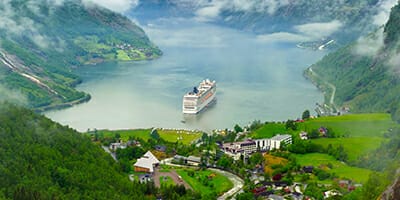Norway and Britain have both announced plans to buy carbon credits, giving the United Nation’s struggling Clean Development Mechanism a boost.
Sovereign institutions have thrown a lifeline to the United Nation’s struggling Clean Development Mechanism, CDM, set up under the Kyoto Protocol which awards tradable carbon credits to projects like wind farms or solar power that reduce emissions.
Norway’s Ministry of Finance has just invited submissions under its plans to purchase carbon credits from struggling green energy projects threatened by low prices for the offset they generate. In another development Britain says it plans to buy £50 million worth of carbon credits.
Norway plans to purchase UN Certified Emission Reductions, CERs, up until 2020 spanning the second commitment period of the Kyoto Protocol.
Initial purchases of up to 30 million CERs will be made via specialist fund the Norwegian Carbon Procurement Facility, NorCap, set up in October by the Norwegian Ministry of Finance and the Nordic Environment Finance Corporation, NEFCO, an IFI owned by the five Nordic countries that specialises in financing environmental projects.
“We have asked for authorisation from Parliament to spend up to 2 billion Norwegian Krone up until 2020. The 2014 budget appropriation, which is yet to be confirmed by Parliament, is about 316 million Norwegian Krone,” says Sigurd Klakeg, Deputy Director General at the Ministry of Finance.
“Buying these credits is not an investment by the Ministry of Finance. It is for compliance purposes,” says Tommi Tynjala, a senior advisor in carbon finance and funds at Nefco which has assets under management of EUR 230 million.
“It is about helping Norway comply with its Kyoto requirements and helping the carbon market by purchasing from vulnerable projects.”
The carbon market has floundered on oversupply of allowances and reduced emissions eight years on from the first credit being issued. Prices for credits have crashed to less than 50 cents from over 20 euros five years ago.
Under the agreement rich country governments buy the credits to count towards their emissions-cutting targets. Companies can also buy credits to offset the effect of their activities on the climate.
But government institutions are very rarely involved in buying and selling carbon credits. Instead they use the credits to cancel out emissions back home. The financial return comes in that it is often cheaper to buy carbon credits from international projects than reduce domestic emissions.
Klakeg says that Norway’s strategy differs from other institutions weighing in to support the market in that it specifically targets the most vulnerable projects. Those that are either at a standstill or “stranded,” and projects which have no other source of revenue but from carbon prices, he says.
Although 30 billion tonnes “is quite a small amount if you compare it to the total oversupply” and “won’t have any impact on carbon prices” Norway’s purchase is very important for the projects selected, argues Tynjala.



